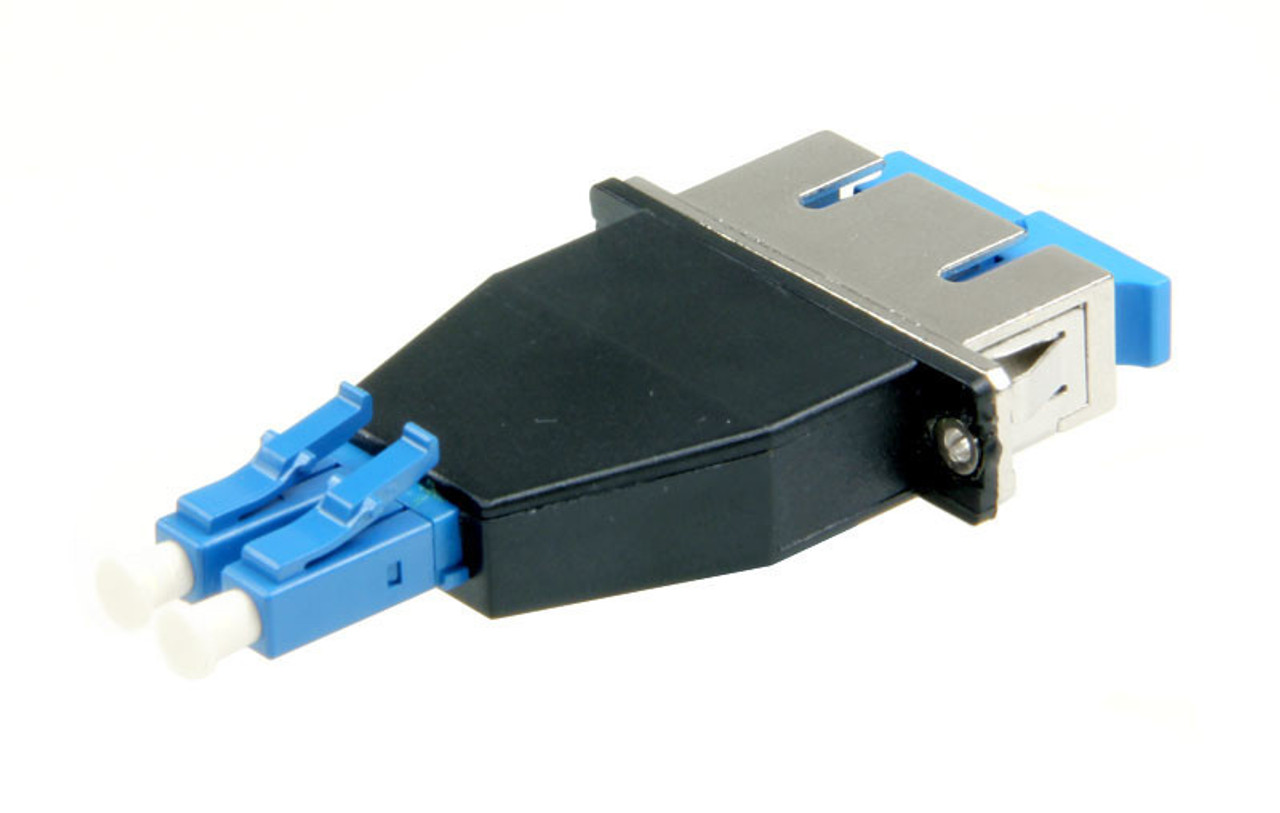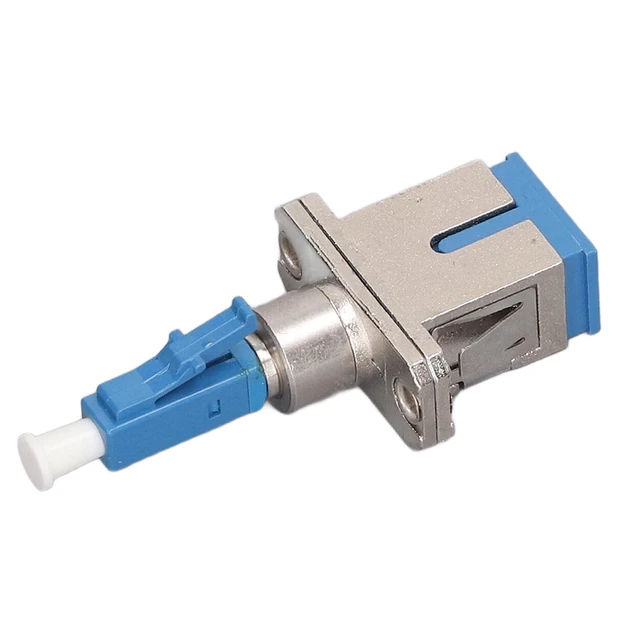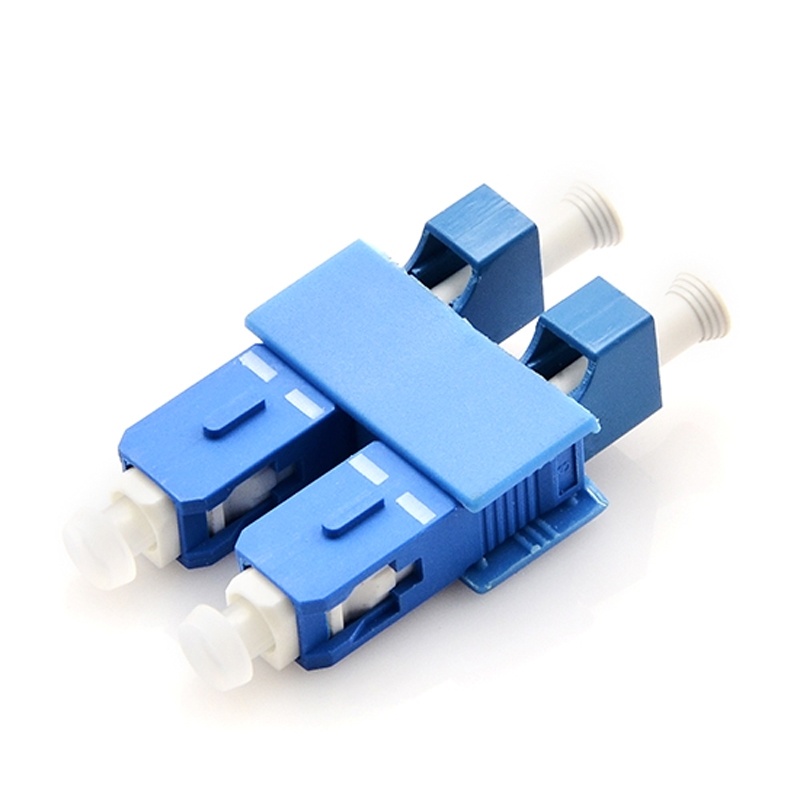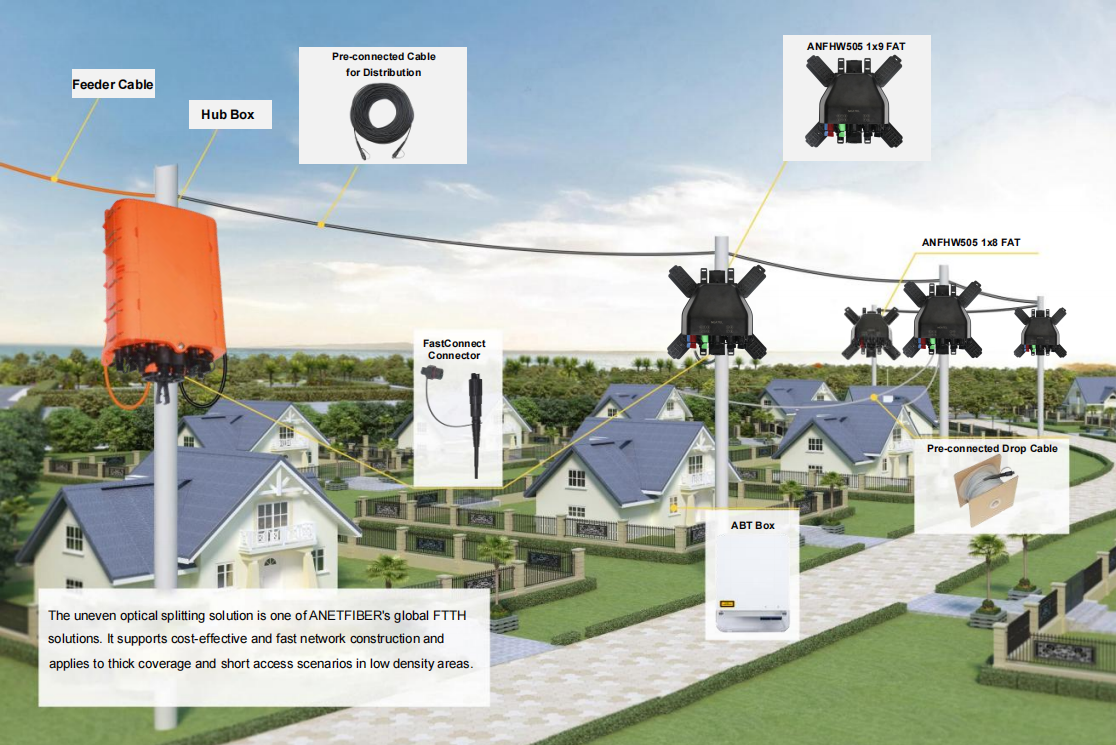Understanding SC and LC Adapter/Coupler for Singlemode and Multimode Fiber Optic Connections

Fiber Optic Connections Overview
Understanding SC and LC Adapters/Couplers
In the realm of fiber optic connections, the distinction between SC and LC adapter/couplers for singlemode and multimode applications is essential. These connectors play a crucial role in ensuring seamless connectivity and efficient data transmission. Understanding their functionalities, differences, and ideal applications is key to making informed decisions when setting up fiber optic networks.
SC and LC Adapters/Couplers Explained
When it comes to fiber optic connections, the SC and LC connectors play a pivotal role in ensuring seamless data transmission. Let's delve into the specifics of these connectors and their functionalities.
SC and LC Connectors
SC connectors are widely recognized for their simplicity and cost-effectiveness. They are relatively easy to install and provide a reliable connection for singlemode and multimode applications.
On the other hand, LC connectors offer higher density, making them ideal for setups where space is a constraint. Their smaller form factor also makes installation easier in high-density environments.
Adapter/Coupler Functionality
Understanding the functionality of adapter/couplers is crucial in fiber optic connections. These coupling devices serve as the interface between different connector types, allowing for seamless connectivity within a network. In both singlemode and multimode contexts, male to female adapters are of significant importance, enabling compatibility between various fiber optic components.
Singlemode & Multimode Fiber Optics Comparison
When considering fiber optic connections, it's essential to understand the differences between singlemode and multimode optical fibers, as well as their respective ideal applications.
Ideal Applications
Singlemode fiber optics are well-suited for long-distance, high-bandwidth applications. Their ability to carry signals over longer distances with minimal loss makes them ideal for telecommunications, cable television, and internet infrastructure.
On the other hand, multimode fiber optics are better suited for shorter distances such as within a building or on a campus. They are commonly used in data centers and local area networks where high data rates are required over short distances.
Differences and Nuances
When comparing singlemode and multimode fiber optics, it's important to consider their unique characteristics. Singlemode fibers have a smaller core size which allows only one pathway of light to travel through, resulting in less dispersion. This makes them ideal for long-distance transmissions. In contrast, multimode fibers have a larger core size that allows multiple pathways of light to propagate through the cable. While this enables them to support multiple light modes, it also leads to modal dispersion which limits their effective transmission distance.

Male to Female Adapters in Fiber Optics
Functionality and Importance
In fiber optic connections, male to female adapters, also known as plug and socket adapters or gender changers, play a vital role in ensuring comprehensive connectivity. These adapters are designed to convert the connection interface from male to female or vice versa, allowing different types of connectors to be seamlessly integrated. The importance of these adapters lies in their ability to bridge the gap between various fiber optic components, enabling compatibility and flexibility within the network infrastructure.
Male to female adapters are essential for accommodating different connector types, making them indispensable in scenarios where diverse equipment needs to be interconnected. Their functionality ensures that regardless of the connector type, a secure and reliable connection can be established, thereby facilitating efficient data transmission across the network. By providing a standardized interface for varied connectors, these adapters contribute significantly to the overall reliability and performance of fiber optic connections.
Installation and Usage
The installation of male to female adapters involves a simple plug-and-play mechanism. Users can easily connect the male end of one connector into the female end of another using the adapter. This straightforward process allows for quick integration without requiring complex tools or configurations. Once installed, these adapters facilitate seamless connectivity between different components, ensuring that data transmission is uninterrupted and efficient throughout the fiber optic network.
Male to female adapters serve as crucial components in achieving comprehensive connectivity within fiber optic networks.
These adapters enable compatibility between diverse connector types, contributing to seamless data transmission.
The installation process involves a simple plug-and-play mechanism, allowing for quick and hassle-free integration.
Applications of Singlemode & Multimode Fiber Optics
Long-Distance vs. Short-Distance Applications
When it comes to the applications of singlemode and multimode fiber optics, their distinct characteristics make them suitable for different transmission needs.
Singlemode Fiber Optics:
Long-Distance Transmission: Singlemode fiber optics are well-suited for long-distance applications due to their ability to carry signals over extended distances with minimal loss. This makes them ideal for telecommunications infrastructure, internet backbones, and long-haul networking where data needs to travel vast distances without degradation.
Multimode Fiber Optics:
Short-Distance Transmission: In contrast, multimode fiber optics are better suited for short-distance applications within buildings or campuses. They are commonly used in local area networks (LANs), data centers, and enterprise environments where high-speed data needs to be transmitted over relatively shorter distances.
Bandwidth and Speed Considerations
Singlemode Fiber Optics:
High Bandwidth: Singlemode fibers offer high bandwidth capabilities, making them suitable for transmitting large volumes of data over long distances at high speeds. This makes them ideal for applications requiring extensive data transfer such as telecommunication networks and internet infrastructure.
Multimode Fiber Optics:
Moderate Bandwidth: While multimode fibers also offer substantial bandwidth, they are better suited for moderate-distance transmissions at lower speeds compared to singlemode fibers. They are commonly utilized in LANs and other short-distance networking environments where high-speed connectivity is essential within a confined area.

Optimizing Adapters/Couplers for Fiber Optic Connections
Enhancing Connectivity and Reliability
In order to optimize the performance of fiber optic connections, it is crucial to focus on enhancing the connectivity and reliability of adapters and couplers. By ensuring that the connectors are securely attached and aligned, the risk of signal loss or interruption can be minimized. Additionally, regular inspection and maintenance of coupling devices can contribute to the overall efficiency of the network. Implementing best practices for handling, storing, and cleaning adapters and couplers can further enhance their longevity and effectiveness in facilitating seamless data transmission.
See Also
Exploring the Applications of LC SC Duplex Fiber Optic Adapters
LC vs. SC Connectors: Choosing the Right Fiber Adapter for Your Network
The Role of Termination Boxes in FTTH Networks
About US
Follow Us
AnetFiber company's main products are indoor and outdoor optical fiber cables, outdoor waterproof pre-connected fiber-to-the-home products, PLC optical fiber splitters, optical fiber jumpers and pigtails, MTP®/MPO high-density big data product solutions, optical fiber field quick connectors and research and development molding, injection molding and production of optical fiber distribution boxes, optical fiber chassis cabinets, the market has expanded to the world, Europe, America, Asia, the Middle East and Latin America.
Address
Shenzhen City, Baoan District, Yanluo Street, Tangxiayong Community, Yangyong Industrial Road, Tonggangda New Energy Vehicle Park 406
Contacts
+86 199 2655 3586

